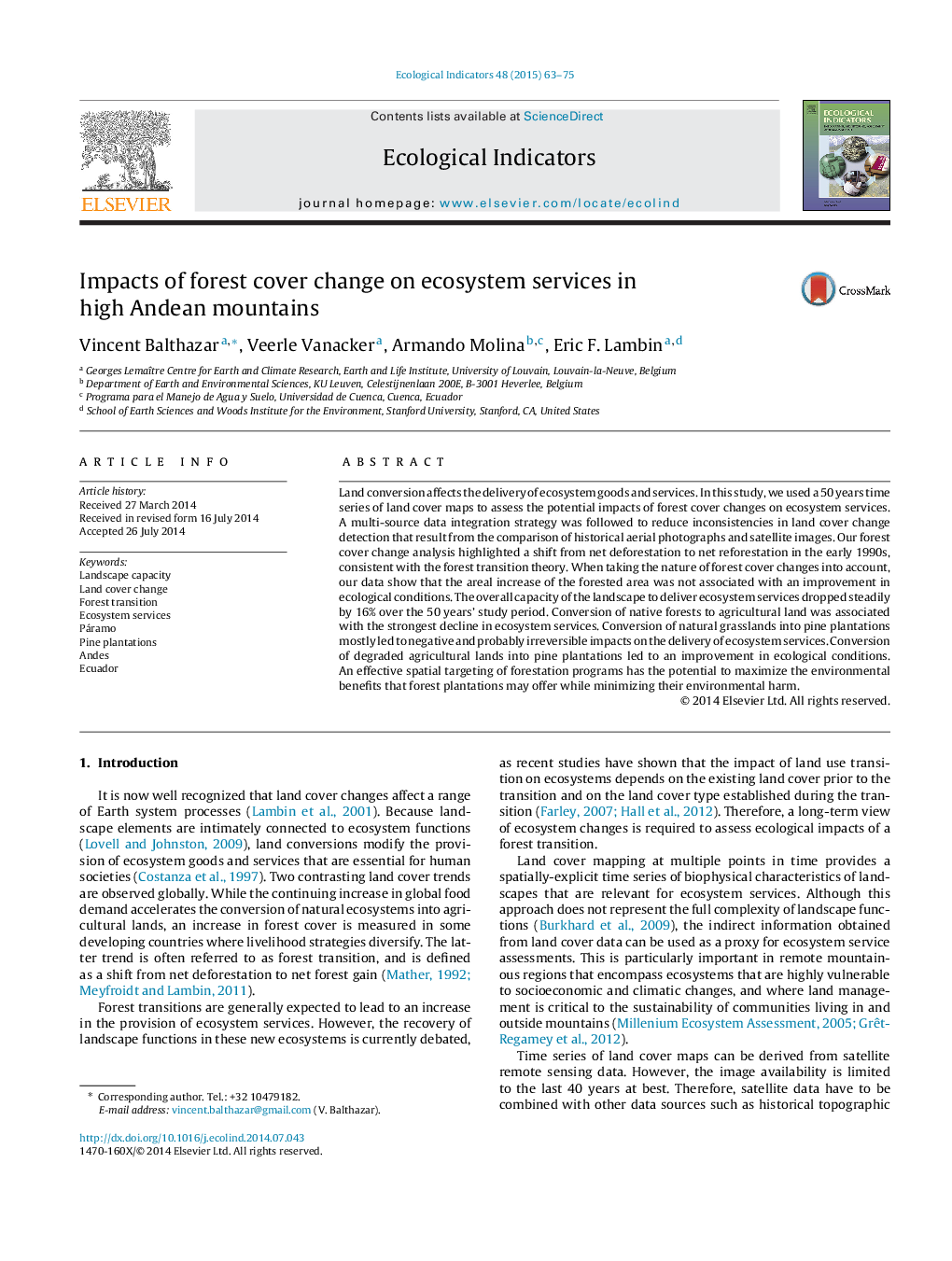| Article ID | Journal | Published Year | Pages | File Type |
|---|---|---|---|---|
| 6294974 | Ecological Indicators | 2015 | 13 Pages |
Abstract
Land conversion affects the delivery of ecosystem goods and services. In this study, we used a 50 years time series of land cover maps to assess the potential impacts of forest cover changes on ecosystem services. A multi-source data integration strategy was followed to reduce inconsistencies in land cover change detection that result from the comparison of historical aerial photographs and satellite images. Our forest cover change analysis highlighted a shift from net deforestation to net reforestation in the early 1990s, consistent with the forest transition theory. When taking the nature of forest cover changes into account, our data show that the areal increase of the forested area was not associated with an improvement in ecological conditions. The overall capacity of the landscape to deliver ecosystem services dropped steadily by 16% over the 50 years' study period. Conversion of native forests to agricultural land was associated with the strongest decline in ecosystem services. Conversion of natural grasslands into pine plantations mostly led to negative and probably irreversible impacts on the delivery of ecosystem services. Conversion of degraded agricultural lands into pine plantations led to an improvement in ecological conditions. An effective spatial targeting of forestation programs has the potential to maximize the environmental benefits that forest plantations may offer while minimizing their environmental harm.
Related Topics
Life Sciences
Agricultural and Biological Sciences
Ecology, Evolution, Behavior and Systematics
Authors
Vincent Balthazar, Veerle Vanacker, Armando Molina, Eric F. Lambin,
